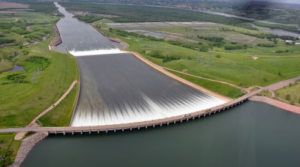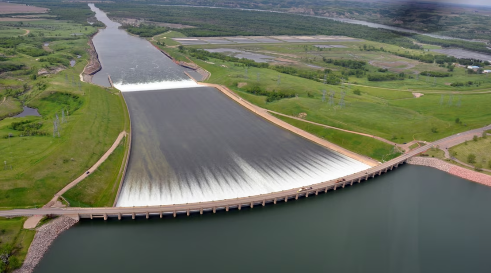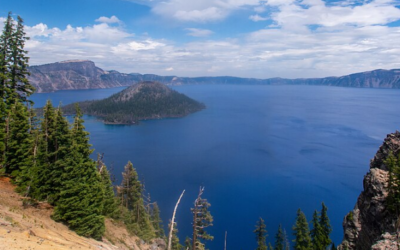It is somewhat challenging to list all the components of water infrastructure. The Environmental Protection Agency (EPA) defines the term as “all man-made and natural features that move and treat water.” And because it takes all types of systems and networks to deliver clean drinking water and preserve water resources, it is difficult to identify any water project that would not be considered a part of the infrastructure.
The opportunities below represent just a few examples of projects eligible for federal funding – water pipelines, reservoirs, transmission lines and treatment plants. These are all vital components of water infrastructure, and the sustainability of water resources is an extremely high priority of government leaders. Because of that, Congress allocated $55 billion through the Infrastructure Investment and Jobs Act (IIJA) for water projects throughout America. The funding represents the largest single investment in water infrastructure in America’s history. Still, it is important to point out that other funding sources are also available for water projects.
At a projected cost of about $4 billion, a large reservoir will be constructed in the California counties of Colusa and Glenn in the Western Sacramento Valley. The project calls for a new above-ground surface storage facility and a new diversion and discharge pipeline. The RFQ for Construction Management at Risk (CMAR) will be released soon, and other contracts will be awarded in 2025. The Sites Project Authority will oversee the massive project, a partnership of other organizations and public entities.
Officials in the city of Fort Smith in Arkansas allocated $221 million from their capital improvement funds to address current water capacity and water pressure issues. In the summer, the daily water demand routinely reaches the maximum available. Approximately 46 miles of 48-inch water transmission lines will be incorporated into the city’s water and sewage system to provide more water supply. This water infrastructure project was designed to be completed in phases. While Phase 1 has been delivered, Phase 2 of the project is ready to launch. It will consist of transmission line work, covering approximately 30 miles and replacing the original 27-inch water transmission network constructed nearly a century ago. Phase 3 will extend the transmission line from the end of Phase 2 by approximately 10 miles, and Phase 4 will extend the transmission line by another 2.2 miles. Finally, Phase 5 will connect the transmission line to the intersection of Highway 255 and Massard Road and complete the connection to the Fort Smith distribution network. Construction on Phase 2 will begin in 2025.

The Garrison Dam Spillway. Courtesy of the US Army Corps of Engineers.
The Garrison Dam Spillway Improvement Project, a safety and infrastructure resilience initiative near Riverdale, North Dakota, carries an estimated cost of approximately $881 million. The project results from concerns identified during a Missouri River flood incident. The project will address and mitigate the dam’s spillway design risks. The objective will be to deliver a series of improvements and modifications to ensure the spillway’s performance during future extreme flood events, thereby safeguarding downstream communities and environments. The project has been vetted and approved through a detailed Dam Safety Modification Study and has entered the design phase. Construction may not begin until 2029, but the U.S. Army Corps of Engineers plans to award a construction contract to a private sector firm.
A $150 million project to construct a pipeline and water treatment plant is advancing in northern Colorado. The Fort Collins Loveland Water District is leading this project.
The cost is a pre-design estimate and is split about evenly, with $75 million paying for the new treatment plant and $75 million going toward the pipeline. Bidding for the pipeline is currently open, with contractor proposals due April 12, while a separate RFP is expected in mid-2024 for the new treatment plant. The project will be delivered using an Integrated Project Delivery method, which involves the contractor early in the process to mitigate project risks. Construction would start in 2027 according to the current timeline.
Officials in the Pittsburgh Water and Sewer Authority will soon begin overseeing work on what has been called a once-in-a-generation Water Reliability Plan. The $470 million effort will include several water improvement projects, all of which will coordinate to provide a more resilient water system to the residents of Pittsburgh. Projects will consist of replacing the liner and cover of the highland reservoir, constructing a pump station and supply main, rehabilitation and replacement of approximately 8,500 feet of piping, improving existing pump stations and constructing a large diameter in-ground piping system. Construction bidding will begin in late summer 2024.
The LaGrange Lock and Dam on the Illinois River in Illinois will soon undergo a significant expansion at an estimated cost of $49.3 million. A project to deliver a new 1,200-foot lock chamber will be launched. This development is part of the Navigation and Ecosystem Sustainability Program to enhance navigation and ecological sustainability along the Illinois and Upper Mississippi rivers. The new lock chamber will be constructed landward of the existing 600-foot chamber and designed to improve operational efficiency significantly. The improvement is critical for enhancing the transport of goods throughout the Midwest, and it will additionally improve the safety and reliability of U.S. waterborne transportation supply chains. This is the second of the seven planned lock chamber upgrades that will receive federal funding in various parts of the U.S.
Hundreds, perhaps thousands, of all types of water infrastructure projects will be launched throughout America over the next several years as government officials rush to upgrade, enhance and improve the sustainability of water resources.
Correction, March 21, 2024: This story has been edited to provide correct details of the Fort Collins Loveland Water District Project.







